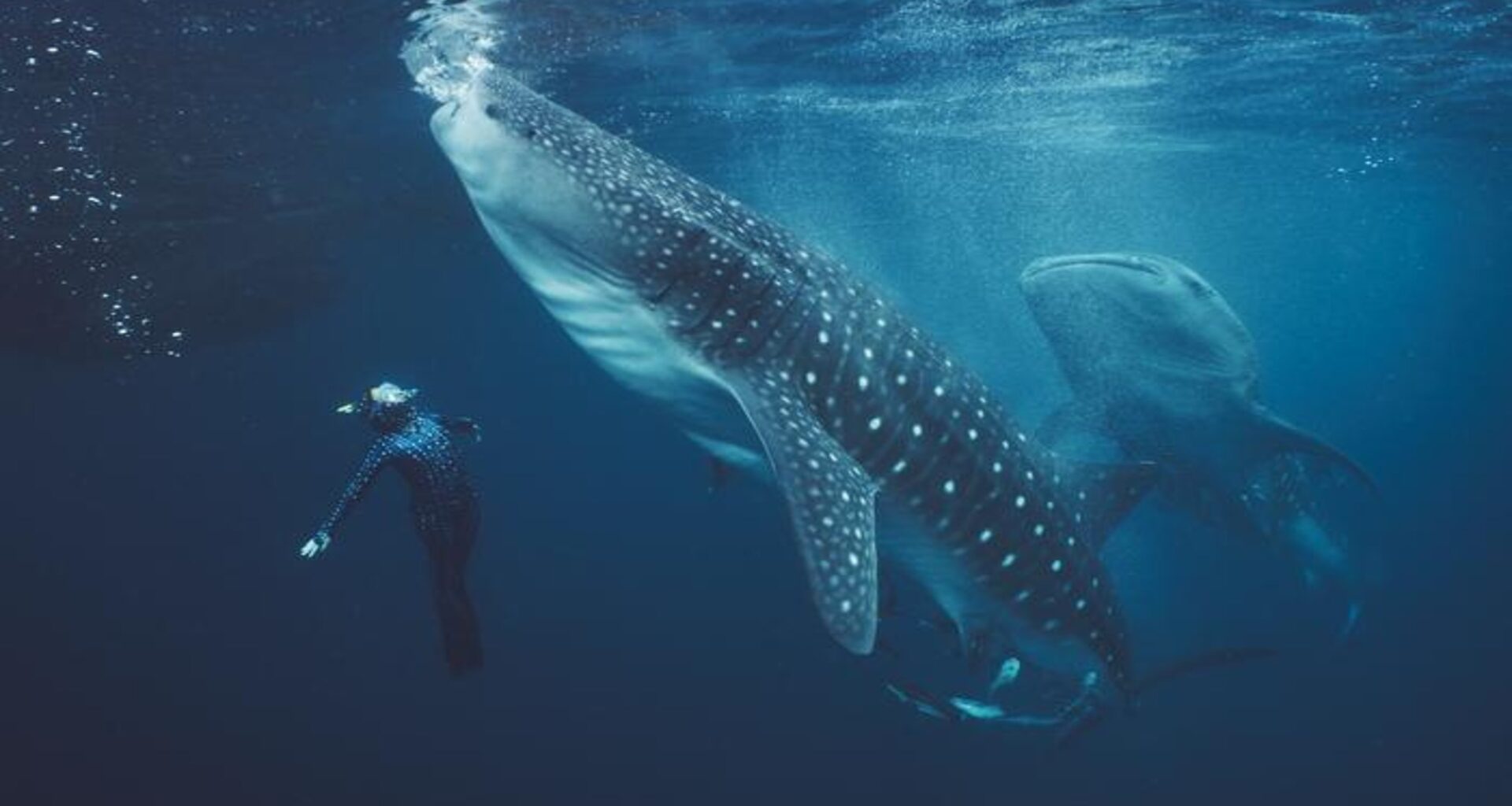Between 2010 and 2023, researchers in Indonesia studied over 200 endangered whale sharks and found that a significant number had scars and injuries caused by human activity.
An international team of researchers conducted an extensive investigation of whale sharks in the Bird’s Head Seascape (BHS) in eastern Indonesia. While little is known about this endangered species, “a comprehensive understanding of a threatened species’ life history is fundamental to effective conservation and management,” according to the authors of a new study published in Frontiers.
Over the past five decades, global whale shark populations have declined due to various human-caused threats, including entanglement in fishing gear, accidental bycatch, and ship strikes. Despite these dangers, whale sharks generate millions of dollars through tourism, underscoring the critical need for improved conservation efforts.
Due to a slow maturation cycle—it takes 30 years for the species to reach sexual maturity—whale sharks recover slowly from threats and injuries. After observing a population off the coast of Indonesia, researchers found a significant number of sharks showed signs of injury from bagans (traditional fishing platforms) and boats, highlighting specific areas where protective measures are needed.
286 whale sharks observed
The research began in September 2010 in Cenderawasih Bay, Indonesia, led by conservation scientists from the Elasmobranch Institute Indonesia. Their database of whale shark sightings was compiled from field surveys and citizen science.
From 2010 to 2023, researchers conducted field surveys two to four times a year. They observed 268 whale sharks, with 98% sighted in Cenderawasih Bay and Kaimana. Since each whale shark has a unique pattern of white spots and stripes on its dorsal surface, researchers were able to identify individual sharks and assess their injuries.
The sharks were seen almost exclusively around bagans, where they were typically feeding on anchovies, herrings, and sprats.
“Previous studies from around the world have shown that adult whale sharks, especially females, prefer the deep ocean where they feed on prey like krill and schooling fish, while the younger males stay closer to shore in shallow, plankton-rich waters that help them grow quickly,” said co-author Mochamad Iqbal Herwata Putra, a senior manager at the Focal Species Conservation Program of the national foundation Konservasi Indonesia.
Whale sharks are seriously hurt
Of the sharks observed, 206 had injuries or scarring. Of these, 80.6% were attributed to human-made causes, while 58.3% were from natural causes (some individuals had both anthropogenic and natural injuries).
“We found that scars and injuries were mainly from anthropogenic causes, such as collisions with ‘bagans’ – traditional fishing platforms with lift nets – and whale shark-watching tour boats,” said Dr. Edy Setyawan, the lead conservation scientist at the Elasmobranch Institute Indonesia and the study’s corresponding author.
“Relatively harmless minor abrasions were the most common. Serious injuries from natural causes, such as predator attacks or from boat propellers, were much less common.”
As most whale shark sightings took place at bagans, when tourism was growing, researchers conclude that initiatives to protect the species were necessary to prevent further injuries from bagans or boats.
“We aim to work with the management authorities of the marine protected areas to develop regulations that require slight modifications to the bagans, including removing any sharp edges from boat outriggers and net frames. We believe those changes will greatly reduce scarring of whale sharks in the region,” concluded Dr Mark Erdmann, the study’s last author, in a press release.
The study has been published in Frontiers.
